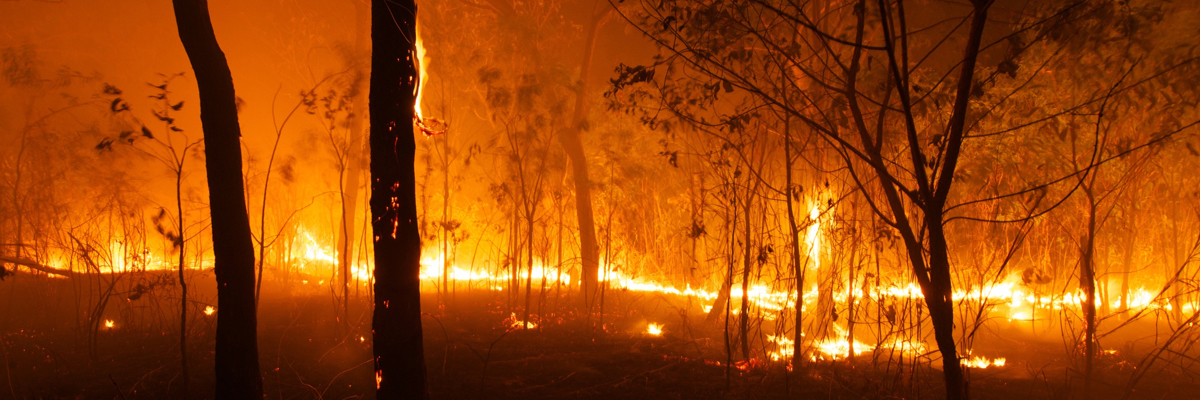Navigating the Demands: Your Overview to Getting a BAL Report
Navigating the Demands: Your Overview to Getting a BAL Report
Blog Article
Essential Tips for Bushfire Administration to Guarantee Fire Protection

Comprehending Bushfire Risk Degrees
Understanding the differing degrees of bushfire risk is crucial for reliable preparation and preparation in mitigating possible dangers to lives and homes. Bushfire risk degrees are commonly classified based upon factors such as climate conditions, fuel availability, topography, and historical fire actions. By comprehending these threat levels, people and communities can proactively apply approaches to decrease susceptability and improve strength when faced with possible bushfire events.
The initial degree of bushfire risk is reduced danger, where the chance of a bushfire happening and causing significant harm is minimal. High-risk levels represent a substantial risk, with problems favorable to fast fire spread and extreme fire habits.
Understanding these bushfire danger levels allows stakeholders to customize their readiness and feedback activities appropriately, guaranteeing a proactive and effective technique to bushfire administration.
Creating a Defensible Area
Efficient bushfire management starts with developing a defensible space around homes to enhance defense versus possible fire threats. A defensible area is a barrier area that produces a barrier between a framework and the bordering flammable plant life. This area functions as an essential line of protection, offering firemens a secure area to run and assisting to decrease the threat of a fire spreading out to the building.
When creating a defensible room, it is necessary to consider the design of the residential or commercial property and the surrounding landscape. Clearing plants, specifically extremely flammable plants, within a certain span of the residential or commercial property can assist avoid the quick spread of fires. Additionally, maintaining a well-irrigated area around the residential property can further improve its defensibility.
Routine upkeep of the defensible area is important to guarantee its effectiveness. This includes cutting looming branches, clearing dead greenery, and keeping the area without debris. By investing time and effort into creating and preserving a defensible space, home proprietors can significantly improve their possibilities of protecting their homes and possessions during a bushfire.
Carrying Out Fireproof Landscaping
When developing landscapes to reduce the danger of bushfires, including fire-resistant elements is necessary for enhancing residential property defense and decreasing fire risks. Executing fire-resistant landscaping involves strategic preparation to develop a defensible room around structures. Beginning by picking fireproof plant types that are less likely to ignite and generate reduced levels of flammable products. Select plants with high dampness web content, reduced oil content, and marginal dead plant life to lower the danger of fire spread. In addition, maintain appropriate spacing between plants and keep them correctly pruned to stop fire from easily leaping between plants.

Creating an Emergency Situation Emptying Plan
Creating a thorough emergency discharge plan is essential for making sure the safety and security and wellness of people during possible bushfire incidents (BMP). An effective emptying strategy should describe clear treatments to adhere to in the event of a bushfire danger, consisting of designated emptying routes, setting up points, and communication methods
To start developing an emergency emptying strategy, it is vital to examine the certain dangers and susceptabilities of your place. Identify several evacuation courses that bring about secure locations away from the fire, taking into consideration factors such as surface, roadway access, and possible dangers. Develop communication channels to alert residents of an approaching discharge, making use of approaches such here as alarms, message alerts, or door-to-door notifications.
Routinely testimonial and practice the discharge plan with all citizens or area members to ensure everyone recognizes their duties and obligations. Conduct drills to test the efficiency of the strategy and make any necessary changes. By having a well-prepared evacuation strategy in position, you can enhance the opportunities of a organized and safe discharge during a bushfire emergency situation.
Maintaining Fire Safety Tools
After developing a detailed emergency evacuation strategy for bushfire events, it is critical to focus on the regular upkeep of fire security tools to make sure optimal capability and preparedness. Regular upkeep of fire security tools such as fire extinguishers, smoke alarm, smoke alarm, and lawn sprinkler is critical in securing lives and building during a bushfire. Performing routine evaluations, screening, and servicing official source of these gadgets by qualified experts is necessary to guarantee they remain in functioning order when needed.
Fire extinguishers need to be examined regularly for stress levels, visible damages, and proper performance. By faithfully keeping fire safety and security tools, people can boost their readiness and action capacities in the occasion of a bushfire.
Verdict
In verdict, efficient bushfire management involves recognizing danger levels, developing defensible areas, executing fireproof landscape design, establishing emptying plans, and preserving fire safety tools. By complying with these vital tips, people can make sure better fire defense and security for their communities and residential or commercial properties. It is essential to prioritize positive procedures to minimize the dangers associated with bushfires and to be gotten ready for emergencies.
By recognizing the nuances of bushfire threat levels, establishing defensible rooms, carrying out fire-resistant landscaping, developing detailed evacuation strategies, try this web-site and making sure the upkeep of fire safety tools, people and communities can substantially bolster their resilience against the ravages of wildfires - Bushfire Management Plan. These pointers are not only critical for protecting against instant fire threats however likewise for cultivating long-term fire protection methods that can make a significant difference in the face of escalating bushfire risks
Risky degrees symbolize a significant risk, with conditions favorable to fast fire spread and severe fire actions. Normal upkeep of fire security devices such as fire extinguishers, smoke detectors, fire alarm systems, and lawn sprinkler systems is important in guarding lives and residential property throughout a bushfire.In verdict, reliable bushfire monitoring involves understanding risk degrees, creating defensible spaces, carrying out fireproof landscaping, creating evacuation strategies, and maintaining fire security tools.
Report this page